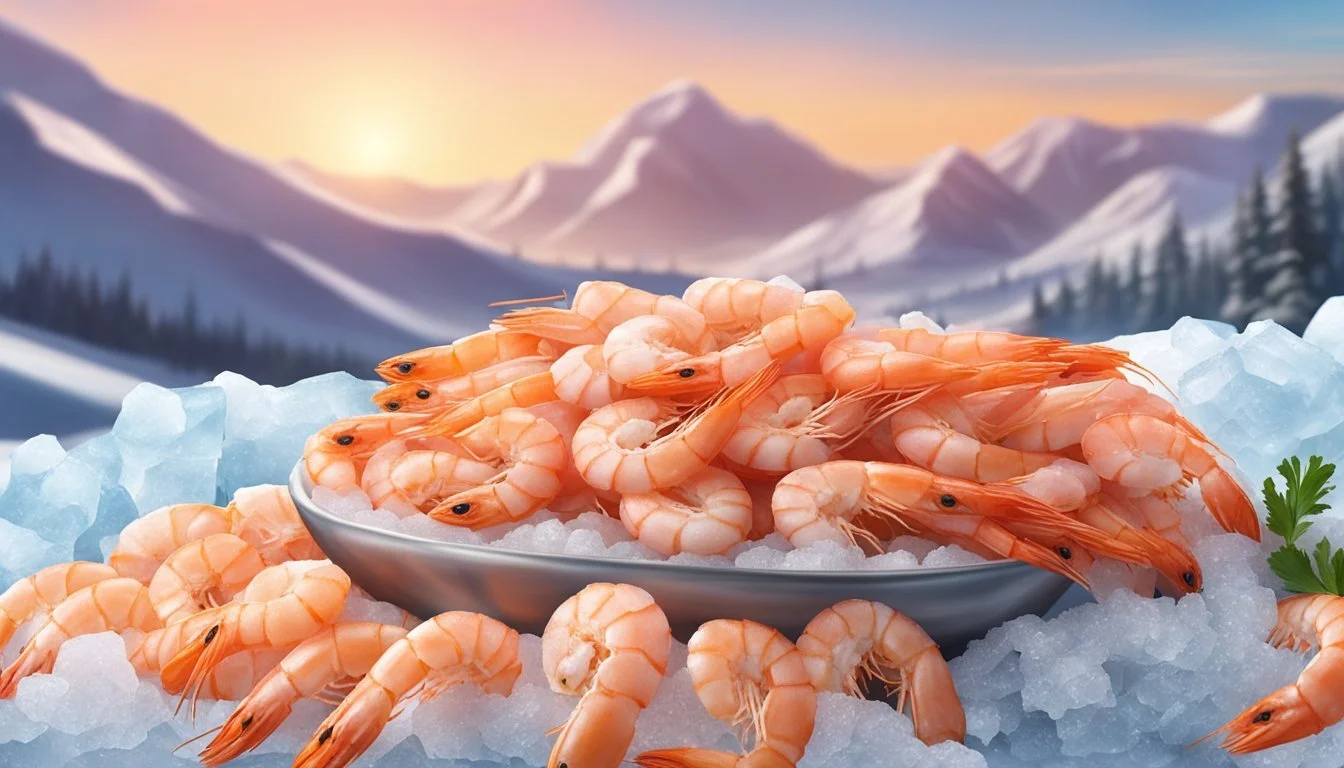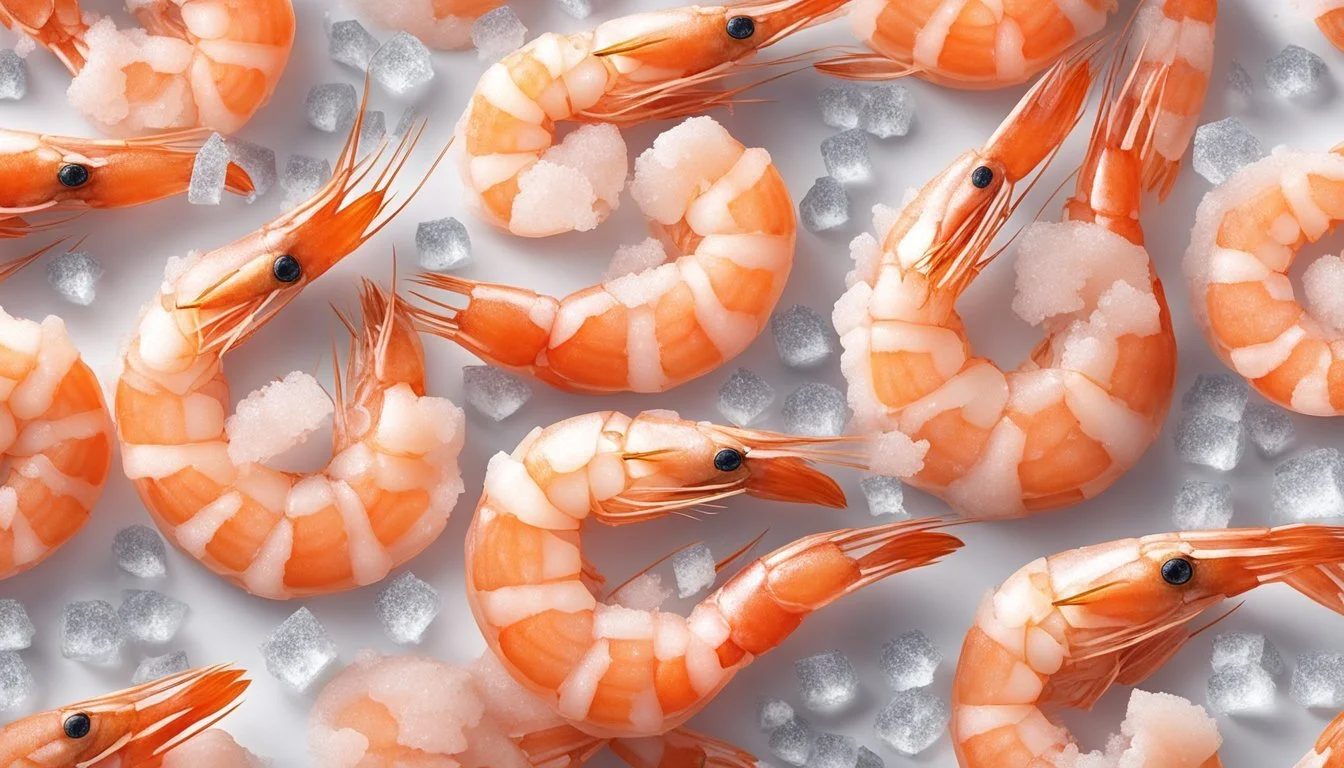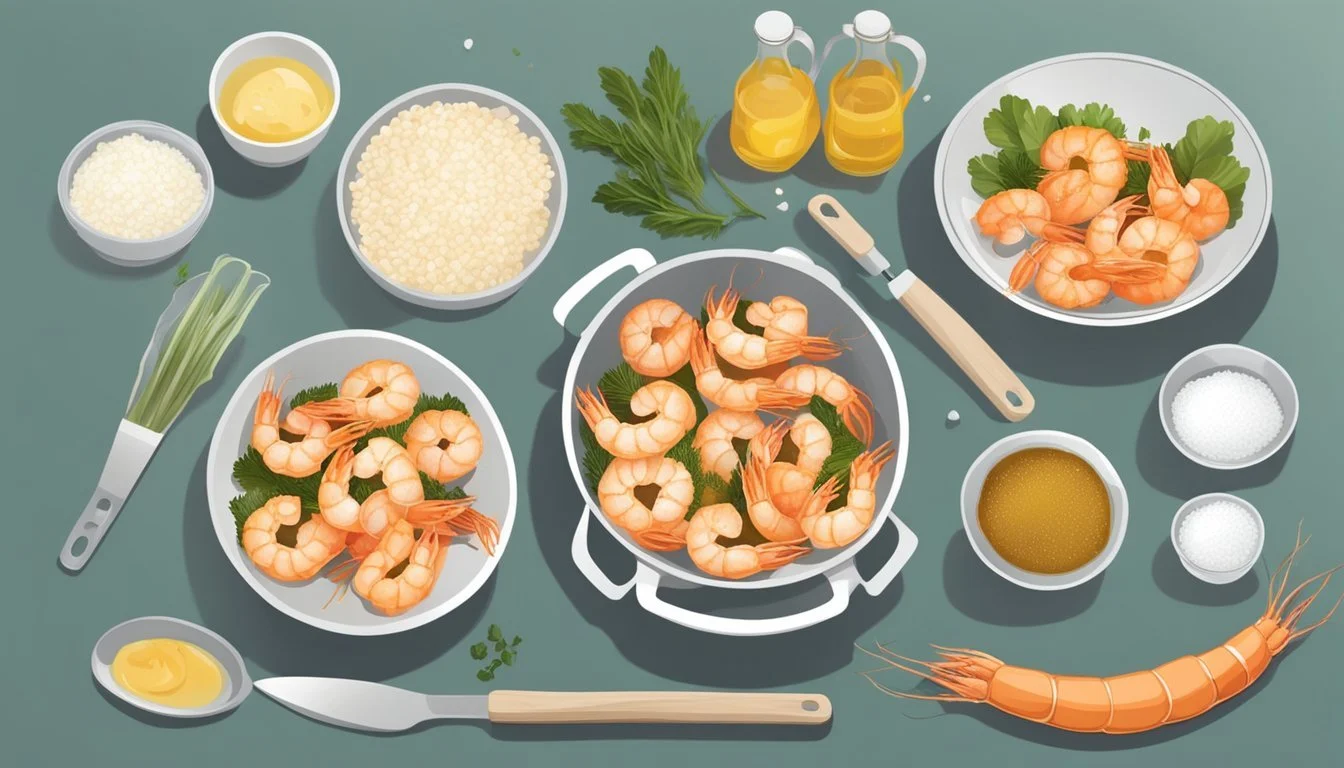Frozen Shrimp vs Fresh: Reddit's Take on the Great Seafood Debate
When it comes to cooking shrimp, many home chefs find themselves pondering whether to reach for the fresh or frozen variety. This common culinary conundrum has sparked numerous discussions on Reddit and other online platforms. While fresh shrimp may seem like the obvious choice, frozen shrimp often offer comparable quality and taste, and in some cases may even be fresher than their "fresh" counterparts.
The seafood industry has made significant advancements in freezing technology, allowing shrimp to be frozen quickly after harvest, preserving their flavor and texture. This process can actually result in a higher quality product compared to "fresh" shrimp that may have spent days in transit or on display. Additionally, frozen shrimp provide convenience and flexibility for meal planning, as they can be stored for longer periods without sacrificing quality.
Despite the advantages of frozen shrimp, personal preferences and specific recipes may influence the choice between fresh and frozen. Some cooks prefer the texture of never-frozen shrimp, while others find no discernible difference. Ultimately, factors such as source, handling practices, and intended use play crucial roles in determining the best option for each culinary situation.
Understanding Shrimp Terminology
Shrimp terminology can be confusing for consumers. The labels "fresh," "frozen," and "previously frozen" have specific meanings in the seafood industry that impact quality and flavor.
Fresh Shrimp Explained
Fresh shrimp refers to shrimp that have never been frozen. These are typically caught and sold within a few days. Fresh shrimp have a firm texture and sweet flavor.
However, truly fresh shrimp are rare in most grocery stores. The shelf life is very short - usually only 1-2 days after catch.
Most "fresh" shrimp at seafood counters have actually been previously frozen. Always ask the fishmonger about the shrimp's history.
Frozen Shrimp Defined
Frozen shrimp are caught, processed, and frozen quickly after harvest. Modern freezing methods lock in freshness and quality.
Individually quick frozen (IQF) shrimp are flash-frozen separately. This allows for easy portioning.
Frozen shrimp offer convenience and a longer shelf life. When properly frozen, they maintain flavor and texture for months.
Thaw frozen shrimp just before cooking for best results. Refreezing degrades quality.
What Is 'Previously Frozen' Shrimp?
Previously frozen shrimp were frozen after catch, then thawed for retail display. This process is common in grocery stores.
These shrimp are often labeled as "fresh" but have a history of freezing and thawing. The quality can be inconsistent.
Previously frozen shrimp have a shorter shelf life than truly fresh or still-frozen options. Use them within 1-2 days of purchase.
Always check labels or ask about freezing history when buying "fresh" shrimp at the counter.
Considerations When Buying Shrimp
Quality and freshness are key factors when purchasing shrimp. The source, appearance, and storage method all impact the final taste and texture.
Deciding Between Fresh and Frozen
Frozen shrimp often provide excellent quality and convenience. Many "fresh" shrimp at seafood counters were previously frozen, then thawed for display. Frozen shrimp are typically processed and frozen quickly after harvest, preserving their flavor and texture.
When buying frozen, look for individually quick frozen (IQF) shrimp without added preservatives. These allow for easy portioning and maintain better quality. Avoid packages with visible ice crystals, which can indicate thawing and refreezing.
Fresh shrimp can be a good option if you live near the coast or have access to a reputable seafood market. Ask when the shrimp were caught and how they've been stored. Use fresh shrimp within 1-2 days of purchase for best results.
Identifying Quality Shrimp
Appearance is crucial when selecting shrimp. Look for firm, translucent flesh with a mild, ocean-like smell. Avoid shrimp with black spots, yellowing, or strong odors.
Size matters in cooking. Shrimp are often sold by count per pound, such as 16/20 or 21/25. Lower numbers indicate larger shrimp. Choose sizes appropriate for your recipe.
Consider the shrimp's origin. Wild-caught shrimp may have better flavor, but sustainably farmed options can be more environmentally friendly. Check for certifications like Best Aquaculture Practices (BAP) or Aquaculture Stewardship Council (ASC).
Shell-on shrimp often have better flavor, but peeled and deveined varieties offer convenience. Tail-on options provide a middle ground, useful for presentation in certain dishes.
Health and Nutrition
Shrimp provides valuable nutrients while being low in calories. The nutritional content and additives can vary between fresh and frozen options, potentially impacting their overall health benefits.
Nutritional Content Comparison
Fresh and frozen shrimp offer similar nutritional profiles. Both are excellent sources of protein, providing about 20-23 grams per 4-ounce serving. They contain omega-3 fatty acids, which support heart and brain health.
Shrimp is low in calories, with approximately 80-120 calories per 4-ounce serving. The slight variation may be due to differences in processing methods or natural variations among shrimp species.
Essential minerals found in shrimp include selenium, zinc, and iodine. These contribute to immune function and thyroid health. Shrimp also provides vitamin B12 and vitamin D, supporting energy metabolism and bone health respectively.
Presence of Additives
Frozen shrimp may contain additives to maintain quality during storage. Common additives include sodium tripolyphosphate (STPP), which helps retain moisture and prevent freezer burn.
Some frozen shrimp products use preservatives like sodium bisulfite to prevent discoloration. While generally recognized as safe, these additives may cause reactions in sensitive individuals.
Fresh shrimp typically lack additives, appealing to those seeking a more natural product. However, the "fresh" shrimp at grocery stores is often previously frozen and thawed, potentially impacting texture and flavor.
When choosing between fresh and frozen shrimp, consumers should check labels for additives and consider their personal health preferences and dietary needs.
Taste and Texture Analysis
Shrimp lovers often debate the merits of fresh versus frozen options. Both choices offer distinct qualities in terms of flavor and mouthfeel.
Flavor Profile of Fresh Shrimp
Fresh shrimp boast a delicate, sweet taste with subtle briny notes. Their flavor is often described as clean and light. The texture tends to be firm yet tender, with a satisfying snap when bitten into.
When cooked properly, fresh shrimp maintain their natural juiciness. This contributes to a more pronounced seafood flavor that many enthusiasts appreciate.
Fresh shrimp can vary in taste depending on their source and handling. Wild-caught varieties may have a more complex flavor profile compared to farm-raised options.
Taste Difference in Frozen Shrimp
Frozen shrimp can retain much of their original flavor when processed and stored correctly. Modern freezing techniques help preserve the taste and texture effectively.
The flavor of frozen shrimp is often described as slightly less intense than fresh. However, this difference may be minimal and not noticeable to many consumers.
Texture-wise, frozen shrimp can be slightly firmer than fresh. This is due to the formation of ice crystals during freezing, which can affect cell structure.
Proper thawing is crucial for maintaining quality. Slowly thawed shrimp tend to have a better texture compared to those defrosted quickly.
Some argue that frozen shrimp offer more consistent quality year-round, as they're frozen at peak freshness.
Preparation and Cooking Tips
Proper preparation and cooking techniques are crucial for bringing out the best flavor and texture in shrimp. This section covers effective methods for handling, thawing, and cooking shrimp to achieve optimal results.
Handling and Thawing Techniques
For frozen shrimp, thaw in cold water for 15-20 minutes. Place shrimp in a colander and submerge in a bowl of cold water. Avoid using warm water, as it can lead to uneven thawing and affect texture.
Once thawed, pat the shrimp dry with paper towels. This step is important for achieving a good sear when cooking.
For fresh shrimp, rinse under cold water and pat dry. Remove the shell and devein if necessary. Keeping the shell on during cooking can enhance flavor, but it's a matter of personal preference.
Cooking Methods for Optimal Flavor
Sautéing is a quick and effective method for cooking shrimp. Heat oil in a pan over medium-high heat. Add shrimp and cook for 2-3 minutes per side until pink and opaque.
Grilling imparts a smoky flavor. Skewer shrimp for easy handling. Brush with oil and grill for 2-3 minutes per side.
Boiling is ideal for cocktail shrimp. Bring water to a boil, add shrimp, and cook for 2-3 minutes until they float to the surface.
For all methods, avoid overcooking. Shrimp cook quickly and can become rubbery if left too long. Remove from heat as soon as they turn pink and opaque.
Shelf Life and Storage
Proper storage is crucial for maintaining shrimp quality and safety. Fresh and frozen shrimp have different shelf lives and storage requirements that impact their taste and texture.
Storing Fresh Shrimp
Fresh shrimp have a very short shelf life. When stored in the refrigerator, they remain safe to eat for only 1-2 days. To maximize freshness, keep fresh shrimp in the coldest part of the fridge at 32°F to 38°F.
Store them in a sealed container or plastic bag on ice. Change the ice daily to prevent bacterial growth. For optimal quality, cook and consume fresh shrimp within 24 hours of purchase.
If you can't use fresh shrimp quickly, freeze them to extend their shelf life. Rinse the shrimp, pat dry, and place in airtight freezer bags. Remove excess air before sealing.
Best Practices for Freezing Shrimp
Freezing shrimp properly preserves their quality for 9-12 months. Use moisture-proof, airtight packaging to prevent freezer burn. Vacuum-sealed bags work best.
Freeze shrimp as quickly as possible at 0°F or below. Spread them in a single layer on a baking sheet before bagging to freeze individually.
Label packages with the date of freezing. Use oldest shrimp first. For best quality, consume within 3-6 months.
Thaw frozen shrimp in the refrigerator overnight. Never thaw at room temperature, as this promotes bacterial growth. Use thawed shrimp within 24 hours.
Quality Indicators and Concerns
Properly assessing shrimp quality is crucial for both fresh and frozen varieties. Key factors include appearance, texture, and smell, which can indicate freshness and potential issues.
Spotting Melanosis in Shrimp
Melanosis, often called "black spot," is a natural enzymatic reaction that causes dark spots on shrimp shells. It's harmless but can be visually unappealing. Fresh shrimp may develop melanosis within hours of harvesting if not treated.
Frozen shrimp are often treated to prevent melanosis before freezing. However, improper storage or thawing can still lead to black spots forming.
To check for melanosis:
Examine the shell carefully
Look for black or dark brown spots
Pay attention to the head and tail areas
Severe melanosis may indicate poor handling or storage practices.
Assessing Shrimp for Freshness
Fresh shrimp should have a mild, ocean-like scent. Any strong fishy or ammonia-like odors indicate spoilage. Shell-on shrimp offer visual cues for freshness:
Firm, translucent flesh
Bright, clear eyes (if head-on)
Tightly adhered shells
For both fresh and thawed frozen shrimp:
Check for elasticity - fresh shrimp should spring back when pressed
Avoid slimy or mushy textures
Reject shrimp with yellowing shells or flesh
Frozen shrimp quality depends on proper freezing and storage. Ice crystals or freezer burn suggest temperature fluctuations and potential quality loss.






